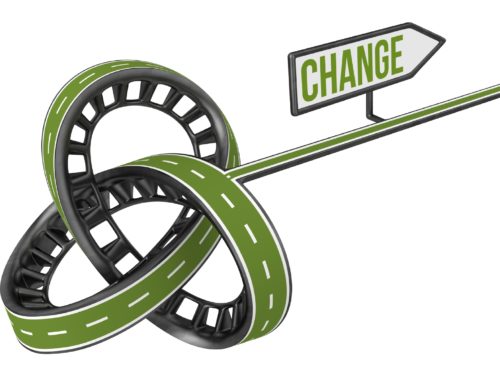A Baby Boomer leader recently lamented in a workshop that it felt as if keeping employees happy had replaced keeping customers happy as a company priority.
There were a few jokes that this was the workplace equivalent of “Hey, you kids. Get off my lawn.” Many of the primarily Boomers and Gen Xers in the room agreed, however.
The Business Roundtable’s latest guidance on the purpose of the corporation still keeps delivering value to the customer as the first priority, but investing in employees is a solid number 2—well ahead of generating long-term value for shareholders which comes in at number 5.
A new study released by O.C. Tanner suggests, however, that perceptions about the importance of keeping employees happy are at least partially correct. The study reveals that creating a valuable employee experience is crucial in in attracting, retaining, and engaging top performers of all generations for your team. The report states that:
- 59 percent of employees would leave their current employer for a similar role, pay, and benefits because of a poor workplace experience.
- 34 percent don’t feel that employee experience matters at their organization.
- 84 percent believe that their organization needs to improve the employee experience.
- 33 percent believe that improving the employee experience is one of the top three urgent issues their organization faces.
- 1 in 5 Millennials left a job in 2017 due to a poor experience.
Why all the fuss?
If you have been in the workplace for a while, you might be thinking, “Well of course younger employees think their experience matters. The economy is great, and unemployment is low. Let’s see if they maintain their ideals after a recession knocks them down.”
It’s easy to fall into that trap. Every generation enters adulthood believing that things need to change and believing that the younger generation doesn’t understand how things work wouldn’t be a cliché if there wasn’t at least a hint of truth in the perception.
Baby Boomers, as an example, came into the workplace with wide-eyed ideas about revolutionizing the workplace. As John Naisbitt wrote in his 1982 book Megatrends:
“When social scientists, management consultants, and public opinion experts speak about the ‘new breed of employees,’ the new motivational theories, the new entitlements and rights attitudes, what they are really describing are the values of the demographic cohort that exploded on college campuses in the late 1960s and 1970s.”
The sheer size of the Boomer generation had a profound impact on leadership, management, and the employee experience. It was not uncommon for the words managers used to describe them in the early to mid-1980s to sound eerily similar to those used about Millennials and Gen Zs today. In retrospect, the motivational theories that found their way to the workplace of the 1960s and 1970s are the foundation for today’s focus on employee engagement and experience.
That’s why all the attention to the employee experience is so important.
A generational shift is underway. Millennial and GenZ employees currently make up almost 40 percent of the workplace. They will approach 60 percent in the next decade, and they will be the demographic force that creates your new workplace reality.
As the O.C. Tanner study points out, Millennials are now becoming leaders within their respective organizations. They seek a collaborative culture rather than a competitive one. They desire a coach and mentor rather than a traditional boss and value flexible work schedules. They seek work-life harmony and integration rather than balance. Most important, the newest generations of employees want to make the world a better place.
What you need to know and do
To establish the kind of workplace culture that will help the next generation of leaders thrive and succeed, there are some questions you ask and concrete, actionable steps you can take.
1. A positive experience is defined on their terms not yours
Does your organization have a corporate initiative focused on the employee experience? Does it design and deliver experiences based on an employee life cycle extending from recruitment to retirement? Is it owned by Human Resources?
That works for a general framework, but it doesn’t get to the true issues about a poor employee experience. Today’s workforce makes their decisions based on perceptions of how they are treated individually more than a company-wide program. It has an impact every time you provide recognition, help someone grow, provide autonomy, or show transparency in your communication. It has the same or greater impact every time you don’t.
It is critically important that every team-lead, supervisor, manager, and organizational leader invest the effort to understand and shape expectations to ensure the best possible experience.
2. Leadership is more than personal and interpersonal behavior
Leadership is the ability to influence the actions and outcomes of others in a way that delivers positive results. That hasn’t changed. What is changing is what that looks like in practice.
Traditionally, leadership is taught from the personal and interpersonal perspectives. It focuses on how individuals in positions of influence act and interact with others. Those are still important aspects for the future. Your staff wants even more feedback, coaching, mentoring, appreciation, and development. More important, they also want a feeling of connection.
It is time to ramp up development of coaching, mentoring, and appreciation competencies. Special attention should be given to how you successfully navigate the blend of personal and professional life. Increasing work-life integration and harmony will likely draw you into conversations that test the boundaries of what is traditionally discussed at work.
More than ever before, leadership that creates a positive employee experience will also require structure and process changes to how you operate.
The vision for what’s ahead is already taking shape. The Business Roundtable’s decision to place increasing shareholder ranks last on the list in its current purpose of the corporation is merely a reflection of what is already happening.
Bridgeway Capital Management is one of many companies founded on and guided by a sense of purpose that extends beyond profit. Companies such as GE and Accenture have been doing away with traditional performance reviews for several years. Seventy percent of professionals work remotely at least once per week, and 53 percent do so for at least have of the week according to Switzerland-based IWG. Globant, a global digitally native technology services company, has turned its organizational structure upside down to promote collaboration and provide autonomy.
“Form follows function” is mostly known as a guiding principle in architecture. It applies to organizations, too. The top-down, command-and-control structures of the past will be challenged in a world that values creativity, autonomy, and collaboration.
3. The culture is everything and everything is the culture
Corporate culture has been hijacked in too many organizations. It has become something owned or at least shepherded by a special group—probably Human Resources. It is being defined as the environment in which people work, and the assumption is often that it involves perks.
Your culture, like the employee experience, is evaluated individually. Enterprise-level programs and perks don’t matter when the team environment is toxic.
Your team doesn’t simply want an excellent culture. They want a culture of excellence. In fact, a sense of success is one of the six components of a great culture defined in the O.C. Tanner study.
This involves much more than how you provide feedback, development, and encouragement. There is a cadence and discipline evident in great organizational cultures. They are process driven and results oriented.
Enjoying your work is important. A culture that focuses on fun to the exclusion of results isn’t a company. It’s a party.
4. This might be the next evolution rather than a revolution
Taking care of your employees isn’t a new concept. The “employee experience” is a logical extension of all the work that has been done on employee satisfaction and engagement.
Numerous studies point to the impact of happy, engaged employees on performance. But perhaps the easiest way to describe the importance of the employee experience is through the words of Southwest Airlines Founder Herb Kelleher. Way back in 2002 – long before anyone started using the term “employee experience” – Kelleher said:
“So my biggest concern is that somehow … we lose that espirit de corps, the culture, the spirit. If we ever lose that, we will have lost our most valuable competitive asset.”
Successful organizations in every industry are doing great things. If yours is one of them, realize that more change is ahead.
If creating a positive employee experience isn’t yet on your radar, it is time to pay attention. Your ability to attract, engage, and retain top talent is in jeopardy.
Alexandre Auguste Ledru-Rollin, the champion of the working class who was forced into exile after the French Revolution in 1848, voiced the mindset of successful leaders as they adapt and change for the future: “There go my people. I must find out where they are going so I can lead them.”
Randy Pennington is an award-winning author, speaker and leading authority on helping organizations achieve positive results in a world of accelerating change. To bring Randy to your organization or event, visit www.penningtongroup.com , email info@penningtongroup.com, or call 972.980.9857.
This article was originally published as part of the IDG Contributor Network.





